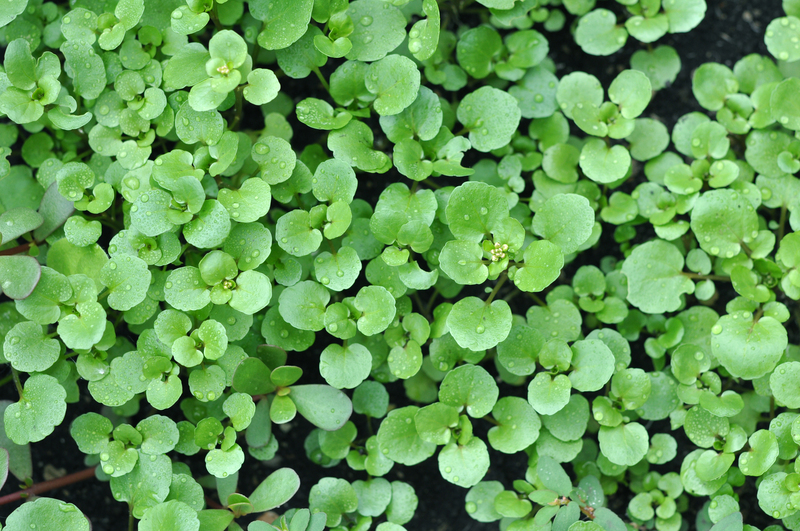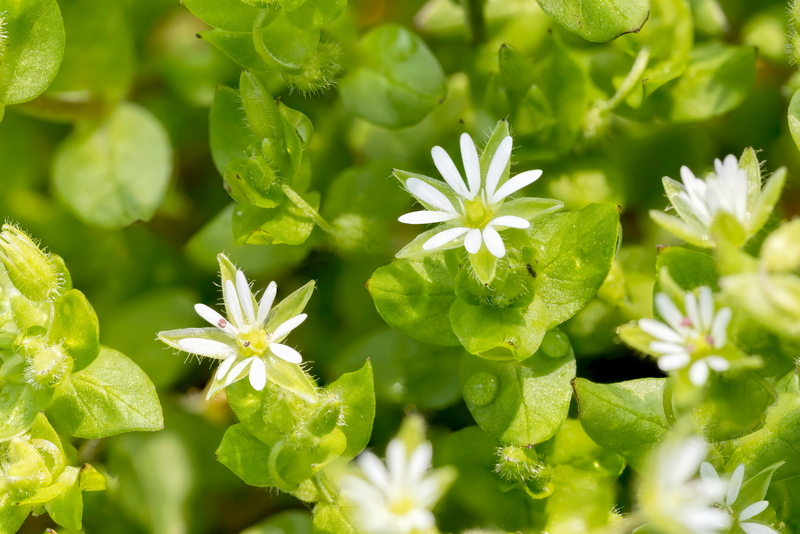Cultivating Change: Gardening Meets Climate Action
Posted on 29/06/2025
Cultivating Change: Gardening Meets Climate Action
The world faces unprecedented environmental challenges--from rising global temperatures to the loss of biodiversity. Yet, hope sprouts from the ground beneath our feet. Gardening, a timeless practice, is rapidly emerging as a powerful tool for environmental resilience and climate action. In this comprehensive guide, we'll explore how gardening and climate action are joining forces to nurture the planet, protect the future, and inspire communities worldwide.
Why Gardening Is a Powerful Climate Action Tool
Gardening is much more than a hobby: it's an act of sustainability and a direct way individuals can join the global climate movement. By transforming urban and suburban spaces into green oases, gardeners support pollinator populations, capture carbon dioxide, reduce runoff, and improve air quality. Below, we uncover the science and transformative potential of cultivating change in the garden.
The Climate Challenges We Face
- Greenhouse Gas Emissions: From vehicles, industry, and agriculture drive global warming.
- Habitat Loss: Urban sprawl and intensive farming displace native habitats and species.
- Soil Degradation: Erosion, pollution, and poor land use threaten food security and biodiversity.
- Extreme Weather: Droughts, floods, and heat waves are becoming more common and severe.
So, how can a backyard or balcony garden (and the millions of gardeners worldwide) contribute to climate solutions?

Gardening: The Root of Climate-Friendly Practices
1. Gardening for Carbon Sequestration
Plants are nature's carbon-capture machines. Through photosynthesis, they absorb carbon dioxide from the air and lock it in their leaves, stems, and roots. By converting lawns to native gardens or planting trees and shrubs, gardeners help sequester more carbon. Composting and building healthy soil further enhance this ability, making every patch of green a small but significant climate ally.
- Trees and Shrubs: Planting long-lived perennials maximizes carbon storage.
- Compost: Diverts food waste and builds soil carbon instead of releasing methane in landfills.
2. Biodiversity Boost: Protecting Pollinators and Wildlife
Gardeners play a vital role in restoring ecosystems and creating habitat corridors, especially in urban environments. Diverse gardens filled with native plants offer food and shelter to bees, butterflies, birds, and beneficial insects. This boost in biodiversity helps ecosystems better withstand and adapt to climate change.
- Native Plants: Require less water and fertilizer, and thrive in local conditions.
- Pollinator Gardens: Support food crops and natural landscapes alike.
3. Soil Health: The Foundation for Carbon Capture
Healthy soil is a living ecosystem teeming with microbes and fungi. These organisms help plants draw down carbon, retain moisture, and resist pests. Regenerative gardening practices, such as cover cropping and minimal tillage, restore soil and play a key role in climate-resilient gardening.
- No-Dig Methods: Preserve soil structure and underground ecosystems.
- Cover Crops: Add organic matter and prevent erosion.
4. Water Conservation and Management
Smart gardening conserves water, reduces runoff, and helps communities withstand drought. Techniques such as drip irrigation, mulching, and installing rain barrels minimize waste and protect local watersheds. Climate-smart gardens are beautiful, resilient, and wise water users.
- Mulching: Retains soil moisture and reduces the need for frequent watering.
- Rain Gardens: Capture and filter stormwater, reducing pollution and flooding.
Climate-Smart Gardening Strategies for Every Space
Urban Gardening Meets Climate Solutions
Even in cities, gardening and climate action can go hand-in-hand. Rooftop gardens, container gardens, and community plots transform urban gray into green. These spaces:
- Reduce the urban heat island effect.
- Absorb rainwater, reducing stormwater runoff.
- Create habitat and food for pollinators and people.
City dwellers can champion climate resilience--one balcony or shared plot at a time!
Edible Gardens and Local Food Security
Growing your own vegetables and fruits supports climate adaptation and lowers your food footprint. Homegrown produce cuts down on food miles, reduces packaging waste, and offers fresher, more nutritious options. Edible landscaping combines climate-beneficial gardening with culinary delight.
Xeriscaping for Dry Climates
As droughts intensify due to climate change, xeriscaping--gardening with drought-tolerant plants--conserves water while creating beautiful, low-maintenance landscapes. Replace thirsty lawns with native grasses, succulents, and mulched beds for climate-wise gardening success.
How to Start Cultivating Climate Change in Your Garden
Beginner Steps for Eco-Friendly Gardening
If you're ready to turn your garden into a force for climate action, start with these practical steps:
- Assess Your Site: Consider sun, shade, and soil conditions before planting.
- Prioritize Native and Climate-Resilient Plants: Native species adapt well to local weather and support local wildlife.
- Reimagine Lawn Areas: Replace sections of turf with wildflower meadows, edible beds, or pollinator strips.
- Create a Compost System: Composting reduces landfill waste and enriches your soil naturally.
- Embrace Mulching: Fewer weeds, less watering, healthier soil--it's a win-win for climate and crops.
- Avoid Chemicals: Skip synthetic fertilizers and pesticides, which can harm soil and water.
- Install Rainwater Harvesting: Collect water using barrels or design rain gardens to make the most of what nature provides.
Small changes in your gardening routine can add up to big benefits for the climate.
Working with Your Community
Community gardens and neighborhood projects expand the impact of sustainable gardening. Through sharing resources, knowledge, and seeds, gardeners foster resilience and climate action at a larger scale. Here's how to get involved:
- Start or join a community gardening group.
- Host workshops on composting, native plants, or pollinator gardening.
- Participate in tree-planting days or urban greening initiatives.
Together, communities can transform entire neighborhoods into climate-friendly landscapes.
Technology and Innovation in Climate-Action Gardening
Smart Gardening Gadgets and Apps
Modern technology is helping gardeners make data-driven decisions for climate resilience. Smart soil sensors, drip irrigation controllers, and weather-tracking apps help optimize water and fertilizer use. With the right gadgets, anyone can manage their climate-friendly garden with precision and ease.
Regenerative Gardening: The Next Frontier
Regenerative gardening goes beyond sustainability--it's about actively restoring ecosystems. This approach involves techniques such as no-dig beds, polyculture, biochar, and mycorrhizal inoculation to build carbon-rich, vibrant soils. Regenerative gardens are living laboratories for climate solutions.
Benefits Beyond the Climate
Integrating climate action into gardening nurtures more than just the environment:
- Health: Growing and eating garden-fresh produce boosts nutrition and well-being.
- Mental Resilience: Time spent in green spaces reduces stress and improves mood.
- Environmental Awareness: Seeing nature's cycles firsthand inspires stewardship and advocacy.
- Community Bonds: Shared gardening efforts build stronger, healthier communities.

Facing the Future: Scaling Up Gardening for Global Climate Impact
Millions of urban and rural gardeners shape landscapes and food systems worldwide. When individual actions are multiplied, their climate benefits add up in remarkable ways. Experts agree that widespread climate-smart gardening can:
- Sequester significant amounts of atmospheric carbon.
- Reduce the heat island effect in cities.
- Reverse pollinator and wildlife decline.
- Improve food security and nutrition.
By cultivating change in our backyards and communities, gardeners become grassroots leaders in the fight for a cooler, greener future.
Conclusion: Your Garden as a Climate Action Center
Every garden tells a story--and now, more than ever, each plot holds the power to shape a healthier planet. By embracing sustainable, regenerative, and climate-smart gardening practices, you become part of a global movement working to protect Earth's climate and heritage.
Ready to let your garden grow as a beacon for change? Start with a single seed, a vision, and the knowledge that nurturing nature is nurturing our shared future. Together, we can cultivate change--one garden at a time.
Further Resources
- Garden Organic - Sustainable Gardening Information
- Regeneration International
- Pollinator Partnership
Let's turn the soil, sow the seeds of change, and grow a future where gardening meets climate action--beautifully and abundantly.

